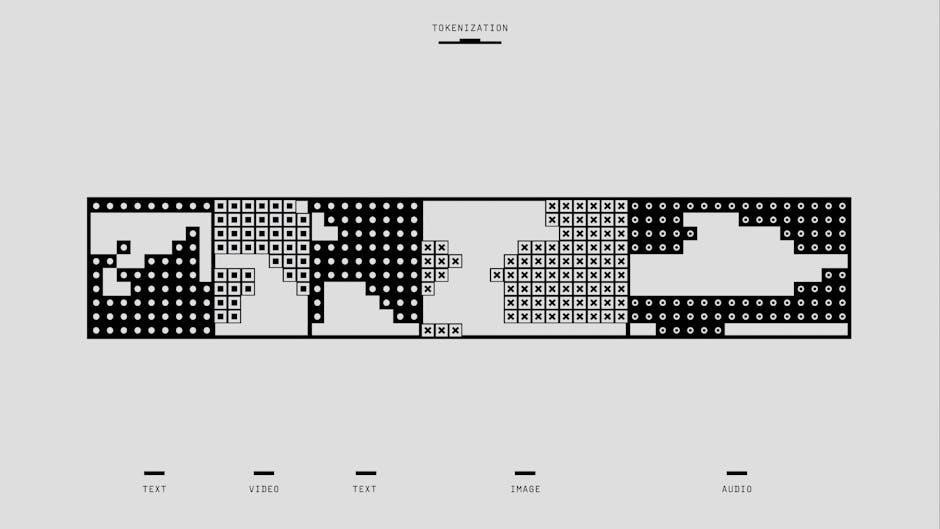
math workbook pdf
Math Workbook PDF: A Comprehensive Guide
Math workbooks in PDF format are invaluable resources for students of all ages. They offer structured practice across various mathematical concepts, promoting skill mastery and a deeper understanding of mathematical principles.
Math workbooks serve as crucial tools in reinforcing mathematical concepts learned in the classroom. These PDF resources provide a structured approach to practice, allowing students to hone their skills at their own pace. They offer a wide range of exercises, from basic arithmetic to more complex problem-solving scenarios.
The accessibility of math workbooks in PDF format makes them incredibly convenient. Students can easily download and print these resources for use at home or on the go. The format ensures that the content remains consistent across different devices. This is a very important aspect of their utility.
Effectively utilizing math workbooks can significantly improve a student’s mathematical proficiency. Regular practice helps solidify understanding, build confidence, and identify areas where further assistance may be needed. The comprehensive nature of these workbooks ensures that all key topics are covered.
Free Math Workbooks: An Overview
Free math workbooks are readily available online, offering a cost-effective way to supplement math education. These resources cover various grade levels and topics, providing ample practice opportunities.
Availability for Grades 1-6
Numerous websites offer free math workbooks specifically designed for grades 1 through 6. These workbooks often align with standard curriculum requirements, ensuring comprehensive coverage of essential mathematical skills. Parents and educators can easily access and download these resources in PDF format, making them readily printable and usable in both classroom and home settings.
The content typically spans a wide range of topics, including basic arithmetic, geometry, fractions, and problem-solving. The availability of such free resources greatly benefits students and teachers, providing extra practice material and support for math learning. These workbooks reinforce classroom instruction and help students build a strong foundation in mathematics, fostering confidence and proficiency. The convenience and accessibility of these materials make them a valuable tool for enhancing math education at the elementary level.

Types of Math Workbooks Available
Math workbooks come in diverse forms, catering to various grade levels and specific math topics. From kindergarten readiness to advanced algebra, there is a workbook tailored to meet every student’s needs.
Kindergarten Math Workbooks
Kindergarten math workbooks serve as a child-friendly introduction to fundamental mathematical concepts. These workbooks often focus on building a strong foundation in number recognition, counting, and basic shapes. Activities are designed to be engaging, utilizing colorful illustrations and interactive exercises that capture the attention of young learners.
These workbooks typically include exercises that involve counting objects, identifying numbers from 1 to 20 (or even 30), and recognizing basic shapes like circles, squares, and triangles. Early addition and subtraction concepts may also be introduced through visual aids and simple word problems. Furthermore, they may contain activities that promote the development of fine motor skills.
The goal of kindergarten math workbooks is to make learning fun and accessible, setting the stage for future mathematical success. By providing a playful and stimulating environment, these workbooks help children develop a positive attitude towards math, fostering a lifelong love of learning.
1st Grade Math Workbooks
1st grade math workbooks build upon the foundational skills learned in kindergarten, introducing more complex concepts and problem-solving strategies. These workbooks typically cover topics such as addition and subtraction within 20, place value understanding up to 100, and basic measurement using non-standard units. Number patterns are explored, and students begin to work with concepts of time and money.
Exercises often involve counting to 100, identifying number patterns, understanding place value (tens and ones), and solving simple addition and subtraction problems with and without visuals. Students may also be introduced to basic graphing and data analysis, as well as early concepts of fractions.
1st grade math workbooks are designed to provide ample practice and reinforcement, helping students develop fluency in basic math skills. They aim to bridge the gap between concrete manipulation and abstract thinking, preparing students for more advanced mathematical concepts in subsequent grades. Word problems are introduced to foster problem-solving skills.
Grade 7 Math Workbooks
Grade 7 math workbooks tackle pre-algebra concepts, bridging the gap between basic arithmetic and more abstract algebraic thinking. Key topics often include ratios and proportions, percentages, integers, and basic algebraic expressions. Students delve into solving one-step and two-step equations and inequalities. Geometry is also a focus, covering area, volume, and surface area of various shapes.
Rational numbers, including fractions and decimals, are explored in greater depth, along with operations involving them. Students begin working with the coordinate plane, plotting points, and understanding linear relationships. Statistical concepts such as mean, median, mode, and range are introduced, along with data representation through graphs and charts.
These workbooks provide practice in applying mathematical concepts to real-world scenarios, fostering problem-solving skills. They aim to solidify students’ understanding of fundamental math principles, preparing them for success in algebra and higher-level mathematics courses. Emphasis is placed on critical thinking and analytical skills.

Key Topics Covered in Math Workbooks
Math workbooks comprehensively cover essential topics, ranging from basic numbers and counting to advanced problem-solving, algebra, geometry, data analysis, ensuring a solid mathematical foundation for learners.
Numbers and Counting
Numbers and counting are fundamental building blocks within math workbooks. Workbooks introduce basic number recognition, sequencing, and counting skills. Exercises involve counting objects, filling in missing numbers, and comparing quantities. These activities help build a strong foundation for understanding mathematical concepts. Children learn to associate numerals with corresponding quantities.
Counting exercises often include skip counting by 2s, 5s, and 10s. These activities enhance number sense and prepare students for multiplication. Workbooks also incorporate number lines and visual aids. Through engaging activities and repetition, math workbooks help students develop fluency in numbers and counting. Mastering these skills is essential for success in later math topics, providing a solid base for further learning.
Place Value and Number Patterns
Place value and number patterns are crucial concepts covered in math workbooks. Place value activities focus on understanding the value of digits in numbers. This includes identifying the ones, tens, hundreds, and thousands places. Workbooks use visual models and charts to illustrate place value. Students practice decomposing numbers into their place values.
Number patterns involve identifying and extending sequences of numbers. Exercises include finding missing numbers in a pattern and creating their own patterns. Workbooks often incorporate skip counting patterns and arithmetic sequences. Recognizing patterns helps develop algebraic thinking and problem-solving skills. These topics build upon the foundational skills of numbers and counting.
Addition and Subtraction
Addition and subtraction are fundamental arithmetic operations heavily featured in math workbooks. Workbooks begin with basic addition and subtraction facts. They gradually progress to multi-digit addition and subtraction problems. Exercises include regrouping and borrowing techniques. Visual aids and manipulatives are often used to illustrate these concepts.
Addition and subtraction word problems are also incorporated to improve application skills. These problems require students to understand the context and choose the correct operation. Practice with a variety of word problems enhances problem-solving abilities. Mental math strategies and estimation techniques are also taught to improve fluency. Regular practice with addition and subtraction is essential for success in mathematics.
Problem Solving
Problem solving is a crucial aspect of mathematics education, and math workbooks provide ample opportunities to develop these skills. Workbooks present a variety of word problems that challenge students to apply their mathematical knowledge in real-world contexts.
These problems require critical thinking, logical reasoning, and the ability to identify relevant information. Problem solving strategies are taught, such as drawing diagrams, making lists, and working backwards. Students learn to break down complex problems into smaller, manageable steps. Practice with diverse problem types enhances their ability to approach new challenges confidently. Math workbooks also include multi-step problems that require combining multiple concepts.

Downloading and Printing Math Workbooks
Accessing math workbooks is easy. Many websites offer free PDF downloads. Ensure compatibility with your printer before printing. Adjust print settings for optimal layout and readability.
Free PDF Downloads
The internet is a treasure trove of resources for free math workbooks in PDF format. Numerous websites and educational platforms offer these downloads, catering to various grade levels and mathematical topics. To find them, a simple online search using keywords like “free math workbook PDF” or “printable math worksheets” will yield a plethora of options.
Before downloading, ensure that the website is reputable and the content aligns with the specific learning objectives. Many sites categorize workbooks by grade level, topic, or skill, making it easier to find relevant materials.
Once you’ve identified a suitable workbook, the download process is usually straightforward. Look for a “download” button or link, which will typically prompt you to save the PDF file to your computer or device.

Utilizing Math Workbooks Effectively
To effectively utilize math workbooks, consistency is key. Regular practice, coupled with focused attention, helps solidify understanding. Reviewing completed work and identifying areas needing improvement is also crucial for progress.
Practice and Skill Mastery
Consistent practice is the cornerstone of skill mastery in mathematics, and math workbooks provide an ideal platform for this. Regular engagement with exercises reinforces learned concepts, solidifying understanding and building confidence. By working through a variety of problems, students develop fluency and accuracy in their calculations.
Furthermore, math workbooks facilitate targeted practice, allowing learners to focus on specific areas where they need improvement. Whether it’s mastering multiplication tables, understanding fractions, or solving algebraic equations, workbooks offer ample opportunities for honing skills. The structured format of most workbooks allows for a progressive learning experience, gradually increasing in difficulty to challenge and engage the student.
Moreover, the act of physically working through problems in a workbook enhances retention and recall. Unlike passively watching videos or listening to lectures, active participation in problem-solving strengthens the neural pathways associated with mathematical concepts, leading to long-term skill mastery.